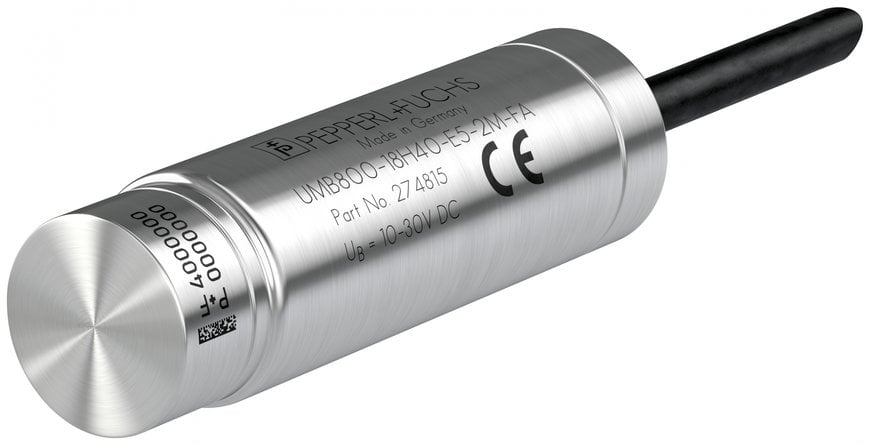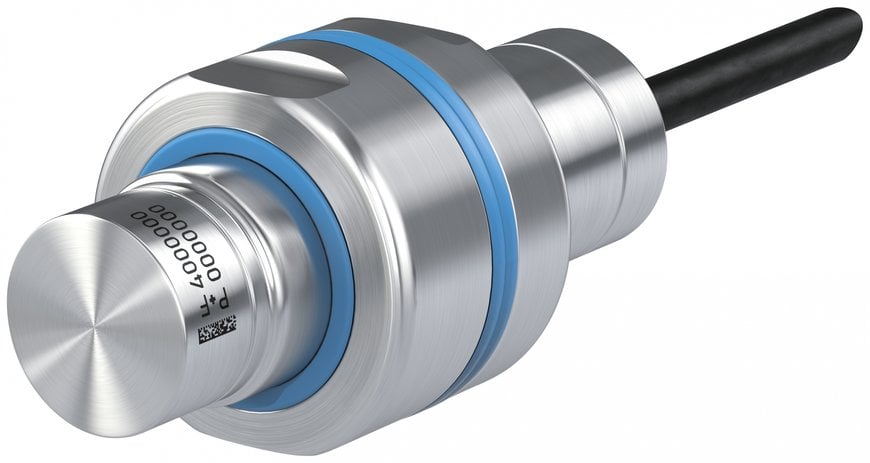www.ptreview.co.uk
17
'19
Written on Modified on
UMB800
The UMB800 from Pepperl+Fuchs is the world's smallest ultrasonic sensor in solid stainless steel. It is made entirely from FDA-compliant materials. With its large detection range and highly compact design, it opens up new automation possibilities in hygienic applications.

At 18mm in diameter and 55mm in length, the UMB800 is the world's smallest ultrasonic sensor in solid stainless steel. The compact design does not reduce its performance: It provides an exceptionally wide measuring range from a dead band of only 70mm and a detection range of 800mm.
The sensor complies with the guidelines of the European Hygienic Engineering and Design Group (EHEDG). All materials are FDA-compliant. The certification covers its specially developed hygienic mounting bracket. No tools are required for assembly. The sensor is resistant to significant temperature fluctuations and remains functional at a continuous operating temperature of up to 85°C.

The UMB800 series is primarily designed for use in hygiene applications (food and pharmaceuticals). It demonstrates its strengths when used in applications in aggressive environments, such as in the chemical or vulcanization industry. The same is true for systems in which robust cleaning methods are used. Typical applications include packaging food in thermoformed trays and measuring the fill level in receiving tanks, as well as applications in car tyre production or processes in electroplating and painting systems, e.g., to detect parts moving into and out of an acid bath.

